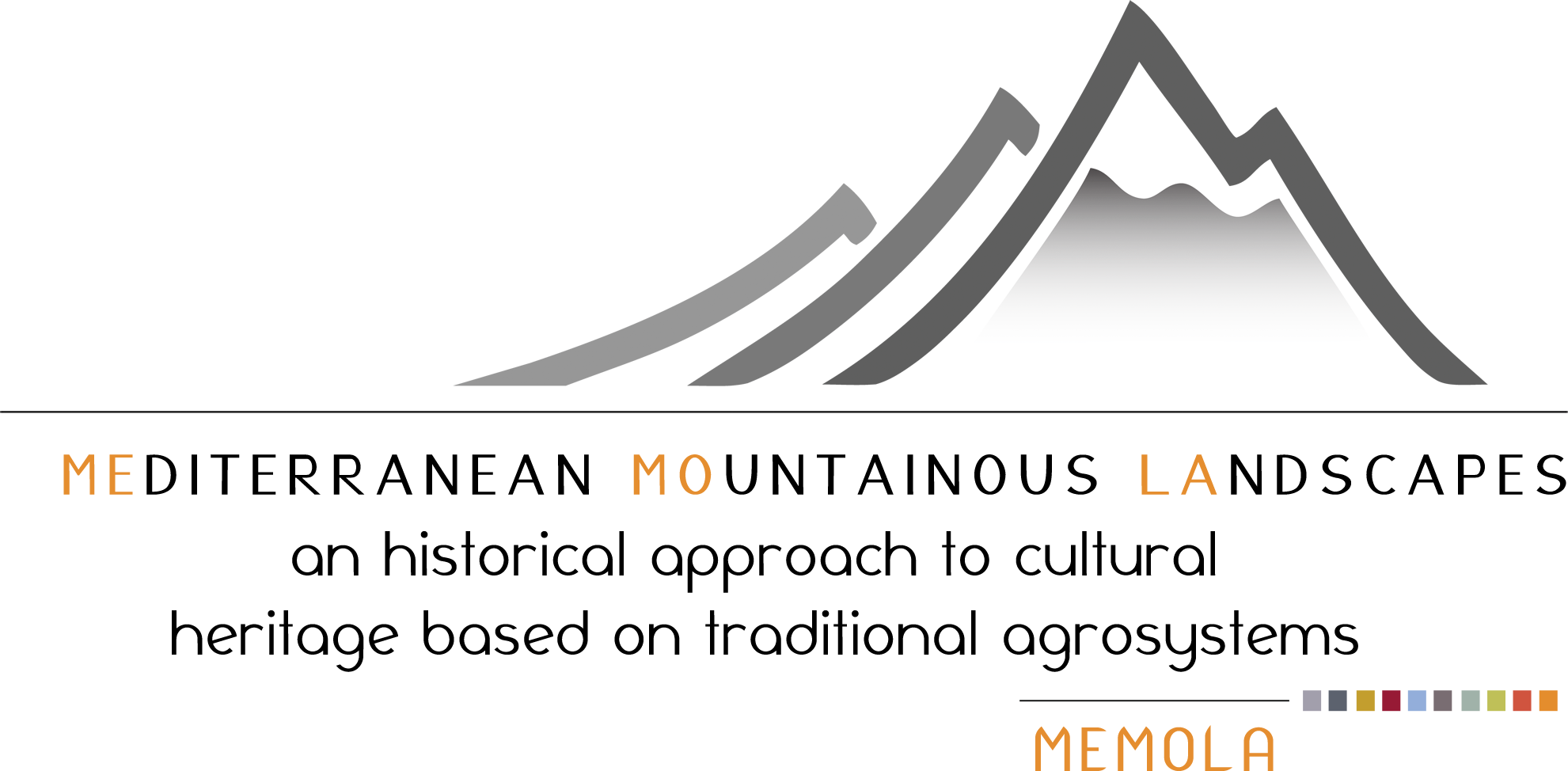Mediterranean Montainous Landscapes: an historical approach to cultural heritage based on traditional agrosystems.
Project Acronym: MEMOLA
Project’s Website: https://memolaproject.eu/
The MEMOLA Project (2014-2017) is financed by European Union’s 7th Framework Programme, under grant agreement no. 613265.
Duration: 01. 1. 2014 – 31. 12. 2017

Project Summary
The MEMOLA project is an interdisciplinary approach to cultural landscapes of Mediterranean mountainous areas, taking as a central axis the historical study of two natural resources essential to generate agro-systems: water and soil. The study focuses on four areas: Sierra Nevada (Spain), Monti di Trapani (Italy), Colli Euganei (Italy) and Upper Vjosa Valley (Albania). The main objective is to analyze cultural landscapes on these areas with a focus on the relationship changes between human communities and natural resources from Antiquity until today. The consortium is composed of a multidisciplinary group of partners and is coordinated by the University of Granada.
CeRPHAAL’s role in the project
CeRPHAAL is Leader of Work Package 3 –
HISTORICAL – ARCHAEOLOGICAL STUDY OF VJOSA VALLEY (ALBANIA)
Work description and partners involved
1. Field surveys in the Upper Vjosa Valley, aiming at examining the archaeological and monumental remains, geomorphology, land and soil composition, hydrology, climate, and other aspects related to cultural landscape of the pilot area. These surveys include:
a) Archaeological field survey (CeRPHAAL).
b) Ethno-archaeological field examination, focused primarily on transhumance communities, their seasonal movements, and the relation to settlement. A specific focus will be on the Vlach ethno-cultural group (CeRPHAAL, UGR).
c) Remote sensing analysis (LIDAR), for identifying grassland areas, historical zones of irrigated and rainfed crops, abandoned agricultural terraces and parcels, irrigation channels, and potential unidentified archaeological sites (UNIPD, UGR).
2. Archaeological excavations, undertaken in areas previously identified as possible settlement locations during the field surveys, in order to understand the site’s chronology, settlement types, spatial and economic patterns, and the dynamics of change in relation to the surrounding territory (CeRPHAAL, USHEFF; CSIC – responsible for archaeobotanical sampling).
3. Analysis of fieldwork data, including ceramics, paleoethnobotanical materials, dendrochronological samples, zooarchaeological remains, soil samples, etc., to support the interpretation and reconstruction of the historical environment of the study area (CeRPHAAL; CSIC – archaeobotanical analysis; UNIPD – paleosol analysis).
4. Archival and bibliographical research on historic land use, forest, pastures and meadows, flora, fauna, settlement, and populations, etc., to enhance field data and support the interpretation of the historical landscape of the Vjosa valley (CeRPHAAL).
5. GIS Cartography of archaeological sites, land uses, and water uses (CeRPHAAL)
Consortium Members
- Universidad de Granada, Spain (UGR)
- Universita degli Studi di Padova, Italy (UNIPD)
- Universidad de Cordoba, Spain (UCO)
- Universita degli Studi di Palermo, Italy (UNIPA)
- University of Sheffield, UK (USHEFF)
- Eachtra Archaeological Projects Limited, Irland (EAP)
- Arqueoandalusi Arqueologia Y Patrimonio, Spain (Sl Arqueo)


